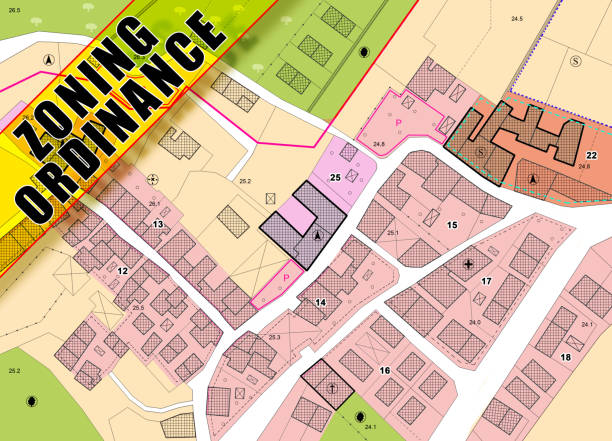Explaining California State Density Bonus Program
California’s housing crisis is no secret. Homes cost too much, land is scarce, and local rules often make building harder than it should be. For developers, that means big challenges when trying to add new housing.
Table of Contents
ToggleThe State Density Bonus Program was designed to change that. In plain terms, it’s a deal: build some affordable units, and in return, the state lets you build more than zoning would normally allow. That could mean extra stories on a building, more apartments on a site, or even fewer parking requirements.
This program isn’t just about adding units. It’s about creating opportunity. Cities gain much-needed affordable housing, and developers gain flexibility that makes projects financially viable.
At JDJ Consulting Group, we help clients use the Density Bonus Program to their advantage. From checking eligibility to securing approvals, our goal is to make sure every project reaches its full potential.
🏗️ Density Bonus Estimator
Historical Background and Legislative Origins
The State Density Bonus Program was first enacted in 1979 under California Government Code §§ 65915–65918. Its purpose was straightforward: encourage the creation of affordable housing in exchange for development incentives. Over the years, the law has been revised to respond to California’s ongoing housing challenges.
Some of the most important updates include:
AB 2345 (2020): Increased the maximum density bonus from 35% to 50%.
AB 1287 (2023): Allowed additional “stacked” bonuses when a project includes very low-income units.
AB 2694 (2024): Expanded eligibility to include residential care facilities, giving more housing options for vulnerable groups.
These changes show how the state keeps adjusting the program to address affordability gaps and market realities.
Here’s a quick look at major milestones:
| Year | Legislative Update | Key Change |
|---|---|---|
| 1979 | Original Law | Created Density Bonus Program for affordable housing |
| 2008 | Amendments | Streamlined process, clarified local government obligations |
| 2020 | AB 2345 | Raised maximum bonus to 50% |
| 2023 | AB 1287 | Added stacked bonuses for very low-income units |
| 2024 | AB 2694 | Extended eligibility to residential care facilities |
For developers and consultants, keeping track of these changes is crucial. Each update can affect feasibility studies, financial models, and even community outreach strategies.
Key Definitions and Eligibility Requirements
Before diving into calculations, it’s important to understand the core terms and rules. Many developers miss out on opportunities because they misunderstand eligibility.
Base Units vs. Bonus Units
Base Units: The number of units allowed by zoning before any bonus is applied.
Bonus Units: The additional units a developer can build if they provide affordable housing under the program.
Types of Affordable Housing Levels
Very Low Income: Households earning less than 50% of Area Median Income (AMI).
Low Income: Households earning 51–80% of AMI.
Moderate Income: Households earning 81–120% of AMI.

Minimum Project Size
To qualify, a project usually needs five or more units. Smaller projects are not eligible.
Special Categories
Some projects get special consideration, including:
Senior housing communities
Student housing near campuses
Housing for foster youth or veterans
Here’s a simplified eligibility reference:
| Eligibility Factor | Requirement |
|---|---|
| Minimum units | 5 or more |
| Income levels | Very Low, Low, or Moderate |
| Special projects | Seniors, students, foster youth, disabled veterans |
| Replacement housing | Required if affordable units are demolished |
Understanding these terms helps set the stage for deeper calculations. At JDJ Consulting Group, we help developers determine whether their project qualifies and how to position it for the maximum bonus.
How the Density Bonus is Calculated
One of the biggest questions developers ask is: “How many extra units can I actually build?” The answer depends on how many affordable units you commit to providing, and at what income level.
The state sets percentages that match your commitment. For example, offering very low-income housing unlocks a bigger bonus than moderate-income housing. Projects with 100% affordable housing can get the highest possible benefits, often with added concessions.
Here’s a simplified table showing how bonuses are calculated:
| Affordable Units Provided | Income Level | Bonus Percentage (Approx.) |
|---|---|---|
| 5% of units | Very Low Income | +20% bonus units |
| 10% of units | Very Low Income | +30% bonus units |
| 20% of units | Low Income | +35% bonus units |
| 40% of units | Moderate Income (for condos) | +35% bonus units |
| 100% of units | Affordable Housing | Up to +80% bonus units |
Key insight: The more affordable housing you include, the more generous the program becomes.
At JDJ Consulting Group, we run the math upfront. This helps clients know how many bonus units are possible and what mix of affordability levels makes the most financial sense.
Incentives, Concessions, and Waivers
Density bonuses aren’t the only advantage. Developers also gain incentives and concessions—tools that make building easier and cheaper.
Incentives/Concessions let you adjust local development standards. This could include:
Reduced setbacks
Increased building height
Smaller open space requirements
Adjusted floor area ratios
Waivers come into play when local zoning makes the density bonus impossible to achieve. If a height limit physically blocks the additional units, for example, the state allows that rule to be waived.
Parking Reductions are another major benefit. Depending on location and project type, you may qualify for fewer parking spaces—or even zero parking if near transit.
These tools save money and unlock site potential. At JDJ Consulting Group, we make sure clients request the right mix of concessions to avoid costly redesigns later in the approval process.
Flowchart: Process of Applying for Density Bonus
Local Compliance, Application Process, and Key Considerations
While the State Density Bonus Program is set by California law, cities and counties still play an important role. Local governments review applications, enforce documentation, and ensure affordability commitments are recorded.
What Developers Must Provide:
Affordable Housing Covenant: A legal agreement ensuring units remain affordable for a set number of years.
Site and Floor Plans: Showing how bonus units fit into the project.
Income Verification: Proof of compliance with state-defined income levels.
Key Considerations:
Timelines: Local agencies must process applications within set timeframes, but delays are common.
Replacement Housing: If a site already has affordable units, you must replace them before bonuses apply.
Community Pushback: Neighborhood opposition can slow projects, even if the law is on your side.
This is where JDJ Consulting Group steps in. We bridge the gap between developers and city officials, helping clients present strong applications that reduce resistance and keep projects moving forward.
Financial and Strategic Impacts for Developers
The State Density Bonus Program isn’t just about adding housing units. It changes the financial math of a project. By securing extra units or reducing design restrictions, developers can significantly improve project feasibility.

Key Financial Benefits:
More Revenue Potential: Additional market-rate units increase long-term income.
Lower Costs: Incentives such as reduced parking or setbacks save money on construction.
Flexibility in Design: Waivers make it easier to fit projects into challenging lots.
Strategic Considerations:
Balancing affordability commitments with project profitability.
Understanding long-term affordability restrictions (usually 55 years or more).
Running scenario models to test different affordability mixes.
At JDJ Consulting Group, we build pro forma models that weigh costs, incentives, and revenue projections. This helps clients see the big picture before committing to a project.
Case Studies and Examples
Every project is different, but examples help show how the program works in practice.
Example 1: Small Urban Project
Size: 15-unit apartment in Los Angeles.
Affordable Commitment: 2 very low-income units.
Result: Project received a 30% density bonus, adding 4 market-rate units.
2nd Example: Large Transit-Oriented Project
Size: 120-unit mixed-use building near Metro station.
Affordable Commitment: 20% low-income units.
Result: Developer gained 35% density bonus, plus reduced parking requirements, saving millions.
Example 3: 100% Affordable Housing Development
Size: 60-unit senior housing project.
Affordable Commitment: All units affordable.
Result: Project qualified for up to 80% density bonus and multiple waivers, making it financially viable with public funding support.
Takeaway: With the right strategy, developers can turn tough sites into profitable opportunities. JDJ Consulting helps identify which bonuses and concessions will have the biggest impact.
✔ 1979
Density Bonus Program enacted under California Govt Code §§ 65915–65918 :contentReference[oaicite:1]{index=1}
✔ 2020 – AB 2345
Max bonus raised from 35% to 50% :contentReference[oaicite:2]{index=2}
✔ 2023 & 2024 Updates
AB 1287: stacked bonuses; AB 2694: adds residential care eligibility :contentReference[oaicite:3]{index=3}
Recent Changes and Trends in Density Bonus Law
The rules for the Density Bonus Program are always evolving. Developers who stay current gain a major advantage.
Key Legislative Updates:
AB 1287 (2023): Introduced “stacked bonuses” for projects with very low-income units.
AB 2694 (2024): Expanded eligibility to include residential care facilities.
AB 2345 (2020): Raised maximum bonus from 35% to 50%.
Current Trends to Watch:
Transit-Oriented Housing Growth: Projects near major transit lines are using bonuses to build taller and denser buildings.
Market Shifts: Rising construction costs make incentives more valuable than ever.
Local Pushback: Some cities resist implementation, but state law gives developers strong protections.
At JDJ Consulting Group, we track every legislative update. This ensures clients are always working with the most current rules and strategies.
How JDJ Consulting Group Helps Clients Navigate the California Density Bonus Program
The Density Bonus Program can unlock huge opportunities, but it’s not simple. Every city interprets the rules differently, and missing one step can cause costly delays. That’s where JDJ Consulting Group comes in.
Our Role in the Process
Eligibility Assessment: We review project plans and local zoning to confirm qualification.
Bonus Optimization: We calculate the mix of affordable units that delivers the greatest benefits.
Application Support: From drafting covenants to preparing site plans, we guide the paperwork.
City Negotiations: We help clients work with planning staff and address community concerns.
Risk Management: We ensure compliance so projects stay protected for the long term.
Why it matters: A developer’s success often depends on using the program the right way. With our expertise, clients avoid mistakes, speed up approvals, and maximize returns.
Test Your Knowledge 🤔
Question: If you provide 20% of units as Low Income in a 50-unit project, what bonus percentage might you get?
Frequently Asked Questions (FAQs)
What is the California State Density Bonus Program?
The California State Density Bonus Program is a housing incentive. It lets developers build more units than normally allowed under zoning. In exchange, they must provide a set number of affordable units for low income or very low income households.
How does the density bonus law work in practice?
Under California density bonus law, the more affordable housing a developer provides, the higher the bonus. This can include additional density bonus units, relaxed development standards, and incentives or concessions like reduced parking or greater height allowances.
How many affordable units are required for a density bonus?
The exact number depends on the project type and target group. For example:
Very low income housing → As few as 5% of total units.
Low income housing → Around 10% of total units.
Moderate-income households (for-sale units) → Around 10% of total units. Local government rules may also apply.
What incentives or concessions can developers receive?
Eligible projects can receive up to three incentives or concessions. These may include:
Reduced vehicular parking ratio
Adjusted Floor Area Ratio (FAR)
Height bonuses for taller buildings
Modified zoning code requirements
How do density bonus units affect project feasibility?
Adding density bonus units can increase rental units or for-sale units without expanding the parcel map. This often improves financial feasibility, especially in high-cost areas like LA where zoning classification limits growth.
Can developers stack bonuses under Assembly Bill 2345 or AB 1287?
Yes. Assembly Bill 2345 expanded density bonus options. On the other hand, AB 1287 introduced a stackable density bonus for projects that include additional affordable housing units. These laws create more flexibility for developers and investors.
How does the program support lower income households?
The program ensures that a percentage of target units are reserved for lower income households. By tying density bonuses to affordability standards, it promotes very low-income housing, low income housing, and middle-income housing across California.
What role does local government play in density bonus approvals?
Local government agencies review the density bonus application. They verify affordability commitments, and approve incentives or concessions. They also enforce the housing element in zoning code and ensure compliance with the Density Bonus Housing Agreement.
How can JDJ Consulting Group help with the State Density Bonus Program?
At JDJ Consulting Group, we guide clients through every stage:
Reviewing eligibility under California State Density Bonus Law
Preparing density bonus application paperwork
Negotiating with local government for incentives or concessions
Ensuring compliance with affordability standards and density bonus housing agreements
What is a residential density bonus?
A residential density bonus allows a developer to build more housing units than normally permitted. In California, this tool is tied to affordable housing commitments for low income and very low income households.
How does Floor Area Ratio (FAR) change with a density bonus?
The Floor Area Ratio (FAR) can be adjusted when a project qualifies for density bonus law. By increasing FAR, developers can add more square footage. Thus, making housing development more profitable while still delivering affordable housing units.
Can student housing development projects use the State Density Bonus Law?
Yes. Student housing development projects are specifically included under California density bonus law. If the project reserves a portion of density bonus units for lower income or very low income students, it can receive extra incentives or concessions.
Ready to Maximize Your Project’s Potential?
Let JDJ Consulting help you optimize your affordable housing mix, secure bonuses, and streamline approvals.
Contact Us Today 💼Conclusion and Key Takeaways
The State Density Bonus Program is one of the strongest tools California offers to boost housing supply while keeping projects profitable. Developers gain extra units, cost savings, and flexibility. Communities gain affordable housing options.
But success depends on strategy. From calculating the right affordability mix to securing approvals, every step requires knowledge of both state law and local practice.
At JDJ Consulting Group, we make the Density Bonus Program work for you. Our team understands the regulations, the financial impacts, and the practical challenges that come with development in Los Angeles and across California.
If you’re considering a project, let us help you unlock its full potential.
Expanded Financial Modeling: Costs vs. Benefits
Numbers often tell the clearest story. Developers need to see how affordability commitments compare with the value of additional units and concessions.
Here’s a simplified example of how a density bonus can impact a mid-sized multifamily project in Los Angeles:
| Scenario | Standard Zoning | With Density Bonus |
|---|---|---|
| Units Allowed | 50 units | 65 units (+30%) |
| Affordable Units Required | 0 | 10 (Low Income) |
| Market-Rate Units | 50 | 55 |
| Estimated Construction Cost | $25M | $27M |
| Estimated Gross Revenue | $40M | $48M |
| Net Financial Impact | Baseline | +$8M potential increase |
Key takeaway: While adding affordable units lowers some revenue, the bonus units and concessions more than offset the difference. Parking reductions, design waivers, and tax credit options can improve the math even further.
At JDJ Consulting Group, we build models like this for every client. Instead of guessing, our clients see the full financial picture before committing.
Lessons from Real Projects: What Developers Should Know
Not every density bonus project runs smoothly. The difference often comes down to planning.
Common Mistakes Developers Make
Underestimating the complexity of affordability covenants.
Forgetting replacement housing obligations for demolished units.
Requesting too few concessions, leaving money on the table.
Ignoring community concerns until late in the process.
How to Avoid Them
Work with consultants early to calculate the best affordability mix.
Coordinate with legal teams to draft airtight agreements.
Engage with city planning staff from the start, not at the last minute.
Prepare visuals and community outreach plans to reduce opposition.
With JDJ Consulting Group, clients move from confusion to clarity. We translate state law into real project solutions.
Future of the Density Bonus Program
California’s housing laws are not standing still. The legislature updates the Density Bonus Program almost every year to respond to new pressures. Developers who stay ahead of these changes have a competitive advantage.
What’s Likely Ahead
More Transit Emphasis: Expect stronger bonuses for projects near transit hubs.
Expanded Eligible Projects: Programs may broaden to include mixed-income condos and adaptive reuse.
Digital Application Systems: Cities are moving toward online permitting, which will speed up review times.
Higher Affordability Demands: Future laws may push for deeper affordability in exchange for larger bonuses.
Why This Matters for Developers
The rules you use today may not apply in a year or two. Long projects must anticipate these shifts to remain compliant and financially viable.
At JDJ Consulting Group, we don’t just interpret today’s law—we track tomorrow’s. That foresight helps clients design projects that stand the test of time.
Contact us today to discuss your project and discover how we can guide you from zoning limits to profitable solutions.
Error: Contact form not found.






